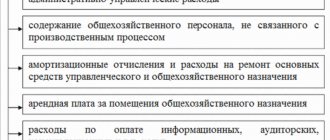“Consultant”, N 12, 2004
RESERVE FOR UPCOMING HOLIDAY COSTS
To evenly distribute the burden of paying vacations to employees throughout the year, both in accounting and tax accounting, the organization may provide for the creation of an appropriate reserve. At the same time, a clear procedure for its formation and use is not defined in either accounting. The author considers possible options for reserving, paying attention to the provisions that must be defined in the accounting policies of the organization.
In order to evenly include future expenses in production and circulation costs, organizations can create appropriate reserves for the types of these expenses. The list of reserves for future expenses provided for by law that organizations can create in the reporting year, the procedure for their formation and use must be reflected in the accounting policies of the organization. The amounts of reserves are subject to regular verification to ensure correct formation and use. It should be noted that before drawing up annual financial statements, an inventory of reserves for future expenses is carried out without fail on the last working day of the reporting year (commentary to account 96 “Reserves for future expenses” of the Instructions for the application of the Chart of Accounts for financial and economic activities of organizations, approved by Order of the Ministry of Finance of Russia dated 10.31.2000 N 94n; hereinafter - Instructions for using the Chart of Accounts).
Expenses for vacation pay for the organization's employees are made unevenly: the bulk of vacation pay payments, as a rule, falls on the summer months. To distribute expenses evenly during the reporting year, it is advisable to create an appropriate reserve. The possibility of creating such a reserve is provided both in accounting and for the purposes of calculating corporate income tax. At the same time, when creating a reserve, for example, in tax accounting, an organization is not obliged to automatically create a reserve for upcoming vacation payments in accounting, and vice versa.
Accounting for reserve
The possibility of creating a reserve for the upcoming payment of vacations to employees is provided for in clause 72 of the Regulations on maintaining accounting and financial reporting in the Russian Federation, approved by Order of the Ministry of Finance of Russia dated July 29, 1998 N 34n.
If a reserve is created for the upcoming payment of vacations, the organization’s accounting policies for the next financial year must reflect a calculation justifying the feasibility of creating a reserve, the procedure for its formation and use. As a rule, in accounting, the monthly amount of contributions to the reserve is determined by dividing the annual amount of the created reserve by 12.
The amount of the reserve for accounting purposes is calculated for the coming financial year based on the planned amount of expenses for vacation pay (including payments for social insurance and security). Such instructions are contained in the Instructions for using the Chart of Accounts. Information on the formation and use of reserve amounts is taken into account in account 96 “Reserves for future expenses”.
The accrual and use of the reserve for upcoming vacation pay is reflected in accounting by the following entries:
D 20 (26, 44, etc.) - By 96 reserve accrual (performed monthly);
D 96 - K 70, 69 include actual expenses for paying for vacation at the expense of reserved amounts.
If at the end of the reporting year the actual expenses for vacation pay exceed the reserve amount, an additional charge is made for the missing amount.
In the accounting records as of December 31, the following entry is made:
D 20 (26, 44, etc.) - To 96 the missing amount was added in case of overspending of reserve funds.
During the year, overexpenditure of reserve funds is reflected in account 96.
If at the end of the reporting year the reserve has not been fully used and the organization does not create a reserve for the next year, then the following adjustment options are possible:
1) reversal of the reserve balance:
D 20 (26, 44, etc.) - By 96, the overly reserved amount was reversed;
2) attributing the balance of the reserve to the financial results of the organization’s activities:
D 96 - K 91 the balance of the reserve is included in non-operating income.
Previously, in paragraph 58 of the Methodological Recommendations on the procedure for preparing financial statements of organizations approved by Order of the Ministry of Finance of Russia dated June 28, 2000 N 60n (repealed), it was established that if, when clarifying the accounting policy for the next reporting year, the organization considers it inappropriate to accrue the corresponding reserve, then the balances funds of the unused reserve as of January 1 following the reporting year are included in the financial result of the organization and are reflected in the accounting records of the organization for January.
At the end of the reporting year, adjustments to the reserve amounts are made depending on the results of its inventory. When conducting an inventory of the reserve and reflecting its results in accounting, it is necessary to be guided by the Methodological Guidelines for the Inventory of Property and Financial Liabilities, approved by Order of the Ministry of Finance of Russia dated June 13, 1995 N 49, to the extent that does not contradict subsequent changes in accounting legislation.
When creating a reserve next year, its size is subject to clarification in accounting. The updated calculation is based on the number of days of unused vacation, the average daily amount of labor costs and unified social tax deductions.
It should be noted that the possibility of transferring the balance of the reserve to the next financial year is controversial among experts. Proponents of the position in which the balance of the reserve at the end of the year should not exist proceed from the principle of temporary certainty of the facts of economic activity, which is enshrined in clause 6 of the Accounting Regulations “Accounting Policy of the Organization” PBU 1/98, approved by the Order of the Ministry of Finance of Russia dated 09.12. 1998 N 60n.
At the moment, the regulatory documents do not clearly establish the procedure for the formation and use of a reserve to pay for upcoming vacations, so the issue remains controversial until its legislative settlement.
Tax accounting of reserve
The accounting policy of the organization for tax purposes reflects the accepted method of reserving, the maximum amount of deductions and the monthly percentage of deductions to the specified reserve. The specified indicators of the organization's accounting policy are determined in the manner prescribed by Article 324.1 of the Tax Code of the Russian Federation. When making a decision on the formation of a reserve, it is necessary to proceed from the economic feasibility of its creation. The created reserve as an element of accounting policy can be used as a method for optimizing the tax burden.
The taxpayer is required to draw up a special calculation (estimate), which reflects the calculation of the amount of monthly contributions to the specified reserve, based on information about the estimated annual amount of expenses for vacations, including the amount of the unified social tax on these expenses. It should be noted that Article 324.1 of the Tax Code of the Russian Federation does not specify what amount of unified social tax should be taken into account in calculating the reserve - with or without taking into account insurance contributions for compulsory pension insurance. In this regard, the taxpayer has the right to establish an appropriate calculation procedure in the accounting policy.
The percentage of contributions to the reserve for upcoming vacation expenses is determined as the ratio of the estimated annual amount of vacation expenses to the expected annual amount of labor expenses. It is not clear from the wording of the above article what is meant by the estimated amounts of expenses for wages and vacations. In the accounting policy for tax purposes, it is necessary to establish what amount is taken into account, for example, the planned amount of expenses for the next year or the actual amount of expenses for vacation pay for the previous year.
In accordance with paragraph 24 of Article 255 of the Tax Code of the Russian Federation, expenses in the form of deductions to the reserve for the upcoming payment of vacations to employees of the organization for profit tax purposes are included in labor costs.
In tax accounting, various algorithms for calculating monthly contributions to the reserve can be used. Thus, the determined monthly percentage of deductions can be calculated by dividing the estimated annual amount of vacation expenses by the estimated annual amount of labor expenses and 12 months, or the resulting percentage is not divided by 12 months. In the first case, the amount of monthly contributions to the reserve is determined by multiplying the annual amount of labor costs by the percentage of contributions and is a constant value. In the second case, the amount of monthly deductions is determined by multiplying the monthly estimated labor costs by the percentage of deductions. The amount of monthly contributions in this case is variable.
To this we can add that the first of these calculation methods is most consistent with the principle of uniform distribution of expenses in tax accounting.
The reserve amounts underutilized at the end of the tax period in tax accounting are subject to mandatory inclusion in non-operating income of the current tax period (clause 3 of Article 324.1, clause 7 of Article 250 of the Tax Code of the Russian Federation).
It should be noted that the need to recognize in tax accounting as part of income the amount of unused reserve for the amount of vacation “carrying over” from one tax period to another is a controversial issue. In order to avoid disagreements with the tax authorities, it is necessary to reflect the entire amount of the unused reserve as part of non-operating income at the end of the reporting period.
Account 91 in accounting
A complete list of other income and expenses can be studied in the order of the Ministry of Finance of the Russian Federation dated October 31, 2000 No. 94n.
The “Other income and expenses” account is active-passive. The credit of the account reflects the receipt, and the debit records the expense:
The main subaccounts for 91 accounts are presented in the figure:
The purpose of analytical accounting for 91 accounts is to provide the ability to determine the financial result based on each type of income and expense. Consequently, when classifying income and expenses, it is necessary to take into account the homogeneous type of costs to ensure the possibility of determining the financial result for each operation of the same type.
For example, amounts under the article “Fines and penalties for contractual obligations” can be attributed to both expenses and income, therefore, the financial result under this article can be analyzed. Or, by analyzing the expense item for paying for the services of credit institutions, the enterprise will be able to see the effectiveness of working with the bank, whether the bank’s “products” are beneficial to the enterprise.
Subaccounts 69 accounts
- 69.01 – Social insurance payments
- 69.02.1 — Insurance part of the labor pension
- 69.02.2 — Cumulative part of the labor pension
- 69.02.3 — Contributions to supplement pensions for flight crew members
- 69.02.4 — Contributions to supplement pensions for employees of coal industry organizations
- 69.02.5 - Additional contributions to the insurance part of the pension for employees engaged in work with hazardous working conditions
- 69.02.6 - Additional contributions to the insurance part of the pension for employees employed in jobs with difficult working conditions
- 69.02.7 - Compulsory pension insurance
- 69.03.1 — Federal Compulsory Medical Insurance Fund
- 69.03.2 — Territorial Compulsory Medical Insurance Fund
- 69.04 - Unified Tax in the part transferred to the Federal Budget
- 69.05.1 - Contributions at the expense of the employer
- 69.05.2 - Contributions withheld from employee income
- 69.06.1 — Contributions to the Pension Fund (insurance part)
- 69.06.2 — Contributions to the Pension Fund (funded part)
- 69.06.3 — Contributions to the Compulsory Medical Insurance Fund
- 69.06.4 — Contributions to the Social Insurance Fund
- 69.06.5 - Compulsory pension insurance for entrepreneurs
- 69.11 — Calculations for compulsory social insurance against accidents at work and occupational diseases
- 69.12 — Calculations for voluntary contributions to the Social Insurance Fund for employee insurance in case of temporary disability
- 69.13.1 — Settlements using Social Insurance Fund funds for policyholders paying UTII
- 69.13.2 — Settlements using Social Insurance Fund funds for policyholders using the simplified tax system
Closing 91 accounts
All subaccounts under the “Other income and expenses” account at the end of the year: balance for December, internal records - must be closed by posting to subaccount 91.09.
The financial result is credited to the debit (loss) or credit (profit) of account 99 “Profits and losses”.
Here is a schematic example of closing 91 accounts:
Postings to 91 accounts “Other income and expenses”
Correspondence and main transactions for 91 accounts are shown in the table:
| Dt | CT | Wiring Description | A document base |
| 91 | 01 | Write-off of retired fixed assets at residual/initial value. | OS-1, SP-51 |
| 91 | 02 | Calculation of depreciation on fixed assets that are leased (not an object of activity). | Accounting statement, Depreciation sheet |
| 91 | 03/04 | Write-off of retired income-generating investments in tangible assets (hereinafter referred to as MT)/intangible assets. | Accounting certificate, Acceptance certificate |
| 91 | 07 | Write-off of equipment for installation (sold/transferred free of charge) at cost. | Acceptance certificate, Invoice |
| 91 | 08 | Write-off of the cost of investments in VNA. | Certificate of acceptance and transfer, Certificate of gratuitous transfer of valuables |
| 91 | 10 | Write-off of materials sold/transferred free of charge (upon disposal of fixed assets) at actual cost. | Acceptance certificate, Invoice |
| 91 | 11 | Write-off of the cost of sold animals (not an activity item). | TTN (SP-32) |
| 91 | 14/59/63 | Creation of a reserve to reduce the value of the investment capital/ensure investments in securities/for doubtful debts. Write-off of amounts to reserves – by reverse posting. | Accounting certificate, accounting calculation for creating a reserve |
| 91 | 15 | Reflection of write-off of materials (actual cost). | Acceptance certificate, Invoice |
| 91 | 16 | Write-off of the share of deviations from the accounting cost of materials sold (if a negative value - a red reversal). | Accounting certificate, accounting calculation for writing off deviations |
| 91 | 19 | Write-off of VAT on materials sold (non-refundable). | Accounting information |
| 91 | 20/21/23 /29 | Write-off of expenses for maintaining production facilities/facilities for conservation. | Accounting certificate, accounting calculations |
| 91 | 23 | Write-off of the cost of services of auxiliary production (upon disposal of fixed assets). | |
| 91 | 28 | Write-off of the cost of irreparable defects (work of an operational nature). | |
| 91 | 43 | Write-off of commercial expenses (for the sale of operating systems, materials). | |
| 91/ 19 | 60 | Reflection of amounts accrued by the contractor for work/services performed upon liquidation/sale of fixed assets, other assets/VAT amount. | Invoice |
| 91 | 60/62/76 | The amount of receivables/debt is written off after the expiration of the statute of limitations/ cannot be recovered in any way. | INV-17, Accounting certificate, Minutes/order of the manager |
| 91 | 66/67 | Reflection of the percentage amount payable for using credits/loans. | Accounting certificate, Bank account statement |
| 91 | 68 | VAT accrual (income from the sale of operating systems/materials). | Accounting certificate, VAT accounting calculation |
| 91 | 70/69/10 | Reflection of expenses for liquidation of OS-v. | Work order for piece work, Certificate of write-off of valuables |
| 91 | 75 | Reflection of expenses (simple partnership agreement). | Accounting certificate-calculation |
| 91 | 51/76 | Reflection of violations of the terms of business contracts (paid/recognized for payment). | Bank account statement, Invoice, Accounting certificate |
| 91.02 91.01 | 52/60/62 /58/… + 55/67 | Reflection of exchange rate differences (negative). Positive - reverse wiring. | Act on revaluation of values, Accounting certificate |
| 91 | 73 | Write-off of the cost of material damage (it is unrealistic to recover, for example, a court refusal). | INV-17, Leader's order Accounting information |
| 91 | 76 | Payment for services of credit institutions/costs of consideration of cases in courts. Profit receivable under a simple partnership agreement / interest on loans, income on shares, shares and securities / fines, penalties and interest for violation of the terms of agreements - reverse posting. | Accounting certificate, Notice/Bank statement, Invoice, KO-1 |
| 91 | 79 | Reflection of expenses on transactions with structural divisions (on a separate balance sheet). Reflection of income - reverse posting. | Invoice, Advice |
| 91 | 81 | The difference between actual costs (repurchase of shares/shares) and par value (participant's own shares/shares). When repurchasing, the difference is reflected by reverse posting. | Accounting statement, calculation of the difference between the actual costs of repurchasing shares and their nominal value |
| 91 | 94 | Write-off of the cost of shortage of valuables in excess of the norm / from damage (in the absence of specific culprits). | INV-3, Manager's order, Accounting certificate |
| 91 | 98 | Write-off of other income amounts (future periods). Enrollment – reverse posting. | Accounting information |
| 99.02/ 99.03 | 91 | Write-off of the balance of income/expenses at the end of the month. | Calculation of the balance of other income and expenses, Accounting certificate |
| 96 | 91 | Crediting to income the amount of unused reserve for upcoming expenses/payments. | Accounting information |
| 60/76 | 91 | Crediting of accounts payable/receivable (unclaimed after the expiration of the limitation period). | INV-17 |
| 10/62 | 91 | The amounts of transactions with containers are reflected. | Waybill, Invoice |
| 07/10/11 /41/43/45 08 /20/21/29 /23 | 91 | The surplus/unaccounted amounts of inventory items identified during the inventory are reflected. | INV-3, INV-19, INV-24 |
Posting examples
When calculating insurance premiums, they must be charged to the same cost account where the salary of the same employee is taken into account. The transfer of contributions to the budget is carried out by various payment orders indicating the BCC of the corresponding fund. Let's consider further examples of drawing up postings for dummies.
Calculation of insurance premiums
| Debit | Credit | Operation designation |
| 08, 20, 23, 25, 26, 29, 44, 91/2, 96, 97 | 69 subaccount “Pension insurance” | Contributions for employee pension insurance have been calculated |
| 08, 20, 23, 25, 26, 29, 44, 91/2, 96, 97 | 69 subaccount "Medstrakh" | Contributions to the health insurance fund have been calculated |
| 08, 20, 23, 25, 26, 29, 44, 91/2, 96, 97 | 69 subaccount "Social Insurance" | Contributions to the social insurance fund for temporary disability and maternity have been calculated |
| 08, 20, 23, 25, 26, 29, 44, 91/2, 96, 97 | 69 subaccount “Injuries” | Contributions for insurance against accidents and injuries have been calculated |
Transfer of insurance premiums
| Debit | Credit | Operation designation |
| 69 subaccount “Pension insurance” | 51 | Employee pension insurance contributions transferred non-cash |
| 69 subaccount "Medstrakh" | 51 | Contributions to the health insurance fund were transferred non-cash |
| 69 subaccount "Social Insurance" | 51 | Contributions to the social insurance fund for temporary disability and maternity were transferred non-cash |
| 69 subaccount “Injuries” | 51 | Payments for insurance against accidents and injuries are transferred non-cash |
Other transactions with insurance premium funds
| Debit | Credit | Operation name |
| 69 subaccount “Injuries” | 70 | A payment was made from the fund due to a work-related injury. |
| 69 subaccount "Social Insurance" | 70 | Sick leave payments have been accrued |
| 99 | 69 subaccount “Pension insurance” | Reflects the accrual of penalties for late payment of employee pension insurance contributions |
| 99 | 69 subaccount "Medstrakh" | Reflects the accrual of penalties for late payment of contributions to the health insurance fund |
| 99 | 69 subaccount "Social Insurance" | Reflects the accrual of penalties for late payment of contributions to the social insurance fund for temporary disability and maternity |
| 99 | 69 subaccount “Injuries” | Reflects the accrual of penalties for late payment of accident and injury insurance premiums |
Examples of transactions and postings for 91 accounts
Example 1. Accounting for other rental income on account 91.01
Let's say Leto LLC, with its main activity in the production of confectionery products, receives income from renting out premises in one of the industrial buildings. The tenant of “Vasilek” pays 50,000 rubles monthly, according to the concluded agreement. Payment for rent was credited to the account in the amount of 50,000 rubles.
The amount of monthly expenses incurred by Leto LLC for maintaining the premises consists of:
- depreciation charges - 2,000 rubles;
- wages for service personnel - 8,000 rubles;
- wage taxes - 1,500 rubles;
- utilities and other services - 3,000 rubles.
Based on the results of November 2021, the following entries were made in the accounting department of Leto LLC:
| Dt | CT | Wiring Description | Amount, rub. | A document base |
| 76 | 91.01 | The amount of rent for November 2021 has been accrued | 50 000 | Certificate of completion |
| 91.02 | 02/70/69/23 | The costs of maintaining the rented premises were written off (2,000 + 8,000 + 1,500 + 3,000) | 14 500 | Receipts, invoices, acts, etc. |
| 51 | 76 | Payment for rental services has been credited to the personal account received from the tenant “Vasilek” | 50 000 | Bank statement |
Example 2. Accounting for other income from the sale of materials on account 91.01
Let’s assume that Leto LLC sold other materials not used in the production of confectionery products. Wherein:
- sales cost - 40,000 rubles;
- cost of materials - 15,000 rubles;
- salary and taxes on wages of production workers - 4,000 rubles.
Accounting for other income from materials sold was reflected in the accounting of Leto LLC with the following entries to account 91:
| Dt | CT | Wiring Description | Amount, rub. | A document base |
| 76 | 91.01 | Accrued income from the sale of materials | 40 000 | Sales Invoice |
| 91.02 | 10 | The cost of materials has been written off | 15 000 | Costing |
| 91.02 | 23 | Costs associated with sales (salaries and taxes) are written off | 4 000 | Payroll |
| 51 | 76 | Funds received for materials sold | 40 000 | Bank statement |
Example 3. Accounting for banking services on account 91.02
Let’s say Leto LLC has entered into an agreement with a bank for the provision of services. At the end of the month (reporting period), the bank provided the following services:
- for installing the Bank-Client system for a period of 3 years (one-time service) - 7,000 rubles;
- for “Bank-Client” service (monthly service) - 400 rubles;
- for settlement and cash services (RKO) - 2,000 rubles;
- for cash collection - 6,000 rubles.
In the accounting of Leto LLC, entries were made to reflect banking services:
| Dt | CT | Wiring Description | Amount, rub. | A document base |
| 91.02 | 60 | RKO services are reflected | 2 000 | Agreement for servicing a bank account, bank statements |
| 91.02 | 60 | Cash collection expenses | 6 000 | Certificate of services rendered |
| 91.02 | 60 | Costs for installing “Bank-Client” | 7 000 | Certificate of services rendered |
| 91.02 | 60 | Expenses for servicing “Bank-Client” per month | 400 | Certificate of services rendered |






